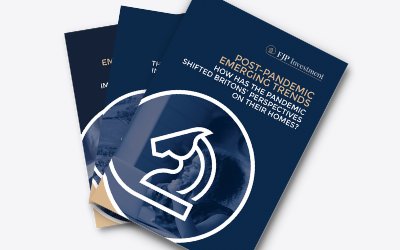Stamp Duty Changes to Motivate First-Time Purchases
In the ever-shifting terrain of UK real estate, the impending modifications to stamp duty land tax (SDLT) have emerged as a hot topic, especially among those poised to step onto the property ladder for the first time. The government’s recent declaration that as of April 1, 2025, stamp duty thresholds will revert to their pre-COVID levels has set off a flurry of speculation and planning.
Understanding Stamp Duty Changes
At present, first-time buyers in England and Northern Ireland enjoy a stamp duty exemption on properties up to £425,000. However, come spring, this relief will be curtailed, with the exemption limit dropping to £300,000. For purchases exceeding this amount, buyers will face a 5% tax rate on the portion between £300,001 and £500,000, a significant shift from the current relief that extends up to £625,000. This adjustment could add thousands to the cost of buying a home for many prospective homeowners, particularly in areas where property prices are higher.
Motivation for First-Time Buyers
From the perspective of UK residents, these alterations might initially appear as a barrier to homeownership. However, the situation is more nuanced. The prospect of losing a tax benefit could serve as a powerful motivator for those who have been contemplating buying but have yet to make a move. There’s a palpable sense of urgency now, with many analysts predicting a surge in property transactions before the new fiscal rules take effect. This scenario could inadvertently stimulate the market, giving first-time buyers the push needed to commit to their investment sooner rather than later.
Regional Disparities in Impact
The effects of these changes aren’t felt equally across the UK. In the Northeast or other areas with lower property values, the stamp duty adjustment might not drastically impact the affordability for first-time buyers. Conversely, in pricier locales like London, the Southeast, or parts of the Southwest, the new thresholds could significantly inflate the cost of entry. This regional variance could lead to a concentrated rush in these high-demand areas, potentially inflating prices in the short term as buyers scramble to secure properties under the current, more favourable conditions.

Market Dynamics Post-Change
While the immediate aftermath might see a boom in sales, what lies beyond April 2025 is a matter of speculation. Some real estate experts predict a potential dip in market activity as the initial rush wanes and buyers adjust to the new financial reality. This could mean a quieter period, allowing for a more measured approach to buying. On the flip side, this adjustment might foster a more stable market environment, where purchases are driven by long-term commitment rather than short-term tax incentives, possibly leading to a more sustainable growth in property values.
Strategic Considerations for Prospective Buyers
For those eyeing their first home purchase, these changes underscore the importance of timing. Strategies might include securing mortgage pre-approvals, engaging with solicitors or conveyancers early, or intensifying the search for the right property. The financial implications of missing out on the current stamp duty holiday could be considerable, particularly for properties just above the new threshold. Furthermore, with an anticipated increase in competition for properties, acting early could be the key to outmanoeuvring others in the market.
Broader Economic and Social Implications
Beyond the direct impact on buyers, these stamp duty changes might also influence broader economic trends. Increased activity in the housing market can stimulate related sectors like construction, home improvement, and even local economies where new homeowners spend more on goods and services. However, there’s also a risk of exacerbating the affordability crisis if prices rise too steeply due to heightened demand.
Moreover, the changes could affect social mobility. For some, the increased cost of homeownership might delay their transition from renting to owning, potentially leading to longer-term renting or moving to less expensive regions, which could have implications for community cohesion and local economies.
Conclusion
The upcoming stamp duty alterations are not merely a fiscal policy adjustment; they represent a pivotal moment for first-time buyers in the UK. While they might add an extra financial burden for some, they also present a window of opportunity for those prepared to act decisively. As a UK resident, understanding these shifts is crucial, not just for financial planning but for strategically navigating the housing market. The clock is ticking, but with smart, informed decisions, first-time buyers can leverage this change to step into homeownership, possibly at a more opportune time than they might have anticipated.
ARE YOU READY TO START INVESTING?
Subscribe to our mailing list now for exclusive deals, investment guides and the latest information from the property market.







